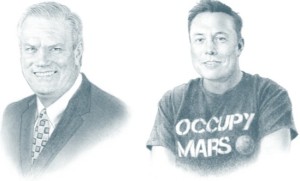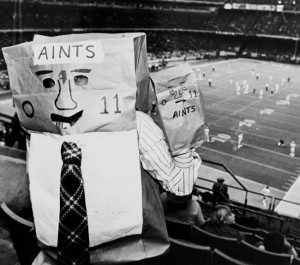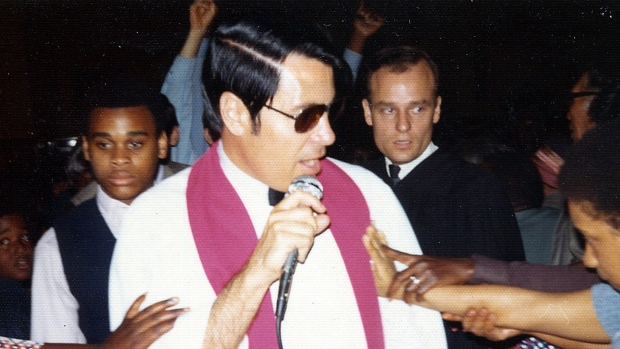
Is it possible to feel so enraged with a soccer team’s loss, you morph into the Incredible Hulk and extinguish the lives of those around you ? In Peru on May 24, 1964 more than 300 people lost their lives never suspecting the answer was Yes. Surely if they understood the potential risks of they never would’ve attended.
In 1964 the National Stadium in Lima more than 300 people died in a soccer riot. The home-country team, Peru, was upset at losing to the visiting Argentinian team. A referee disallowed a controversial goal from Peru. One that would’ve meant a chance at the Olympics. Fans were so upset the fell into a blind rage destroying everything in their path.
Cialdini says sports fans are most susceptible to this irrational behavior when other parts of their life are insecure and downtrodden. That fans desperately needed a fix of positive feedback they couldn’t find outside of soccer.
Some background helps illustrate why Peruvian fans might’ve felt this way. During the early 1960s communist revolution, voter fraud, and military juntas were the norm in Peru.Robert Cialdini believes this reaction to losing came from an intertwined identity between the team and each fan. Peruvian fans were so desperate to be liked as Olympic winners, their team,s loss drove them to a temporary insanity. If the political climate were more secure, would this soccer riot have happened the same way? Maybe, maybe not.
To understand the complete power in likability Cialdini partitions it into 5 areas.
Physical Attractiveness
This one is pretty straight forward. The more attractive you are the more likable you are. The more likable you are the more influential you are. Cialdini even cites examples where attractive criminal were sentenced to less time in court cases than ugly criminals. Short of going out and getting plastic surgery, the Forbes Facelift a popular choice, the main point here is to groom yourself appropriately.
Similarity
You see this trait repeated in the Social Proof summary. It’s a biggie. Generally speaking we like people similar to us. Notice in the last section about attractiveness that I didn’t talk about shaving, makeup, or hair products. That’s because Physical Attractiveness often depends on similarity. For example, if you wanted to ingratiate yourself to a bunch of programmers it’s probably fine to have messy hair or a beard.

In Zero to One (great book BTW) Peter Theil reveals that Founders Fund doesn’t usually back founders dressed in suits. He contrasts his buddy at Paypal with Solyndra CEO Brian Harrison: There is nothing wrong with a CEO who can sell. But if he actually looks like a salesman, he’s probably bad at sales and worse at tech.
When you groom yourself, know who you’re grooming yourself for. The standard suit and tie doesn’t work everywhere.
Similarity goes beyond looks though. Salesmen will regularly chat you up before they try to sell you. They are digging, trying to get to know you personally so they can imitate some detail from your past. “Oh you went to University of Washington, so did my brother. He was a Husky also. Bla bla bla…”
Similarity even extends to unspoken things like posture. When someone has a similar posture to us, we usually favor them. With all of these you have to be careful to not overdo it. One time in an interview I caught someone mirroring my posture. I slowly did the Macarena wondering how far he’d follow me. He stopped at the head.
Cooperation
Similarity can be supercharged with cooperation. Just the act of participating in an activity with someone makes you more likable. Think about “work friends.” These are people who you have very little in common with and would never hang out with in real life. If you have “work friends” chances are you fought a lot of battles in the inbox battlefield and cubicle farms.
A more notorious example comes from the good cop/bad cop technique developed by law enforcement. When police want to elicit a confession from a suspect one of them will pose as irrationally angry. The other will act calm and nurturing toward the suspect. This act sets a stage where the good cop and suspect battle the bad cop. If the technique is used correctly, the suspect will bond with the good cop seeing them as a savior. The ultimate goal is to get the suspect to reveal information or confession to the good cop. This technique is so effective, many innocent suspects have confessed to crimes they never committed.
Compliments
Generally speaking we like people who compliment us. No duh you say. Well, did you know compliments are effective even when they are false. They also work when there is no possibility the compliment can be true. “Hey Brenda saw someone that looked liked you at the Oscars. It must’ve been you. You know important people huh.”
Conditioning & Association
The last variable to likability is conditioning and association. Conditioning is basically making a a link between a feeling and an independent entity. Association is knowingly linking yourself to something popular in order to syphon off likable equity. Some common examples:
- Car show salesmen planting attractive women next to the car they want to sell.(Conditioning)
- TV weathermen receiving hate mail because they reported rain.(Conditioning)
- Radio stations announcing their call letter right before they play a hit song.(Conditioning)
- Political candidates asking Celebrities to campaign for them.(Conditioning)
- Rock groupies that brag about who they had sex with.(Association)
- Donald Trump spending enormous amounts of time talking about how he is winning the Republican Primaries. Every voter wants to elect a winner right. (Association)
- “Name droppers.”(Association)
- Profound euphoria/distress when a local sport team wins/loses.(Association)
 A less extreme example of the 1963 Peru soccer match can be found in the 1980 New Orlean Saints. The Saint’s record was so awful, fans started wearing paper bags on their head. They still wanted to watch their hometown lineup but didn’t want to the stigma of being associated with a losing team.
A less extreme example of the 1963 Peru soccer match can be found in the 1980 New Orlean Saints. The Saint’s record was so awful, fans started wearing paper bags on their head. They still wanted to watch their hometown lineup but didn’t want to the stigma of being associated with a losing team.
My 10 Second Brain Storm
- Attractiveness -On your /About-Us page on your website add some photos of your staff. Don’t be afraid to do a little nip-tuck with photoshop. But don’t go overboard and look plastic. It’s worth the extra time. Little things==big impact.
- Similarity– If you have captured emails at any point of the sales funnel go to Facebook’s power editor, see what interests the have. You can use that to guide your TOFU-MOFU(top of the funnel-middle of the funnel) social media/blog strategies.
- Cooperation-Contribute to charities or causes your customers value. But don’t just donate money. Engage them with a little back and forth. Promise to match their efforts. Send out some thank you letters. Celebrate the total amount raise. Make a T-shirt. This will have a direct effect on reducing churn. Makes for good PR as well.
- Compliments– Use it liberally on emails or landing pages. You could also segment your retargeting by page and compliment the person on whatever subject the page covered in your retargeting copy.
- Conditioning & Association– Offer up something that stimulates dopamine with your brand. White-label some coffee with your logo on it. Coffee-buzz & your logo == brand advocate. If you aren’t big on caffeine white-label a batch of chocolate.
 Back in the 1970s Robert Young starred in many advertisements for Sanka, a healthy alternative to coffee. The strategy behind using Young was that he happened to play a Doctor on TV, Marcus Welby. Could nationally recognized TV doctor recommending a health product actually work? I imagine Hugh Laurie was solicited many times to pitch products like Tylenol or Benadryl.
Back in the 1970s Robert Young starred in many advertisements for Sanka, a healthy alternative to coffee. The strategy behind using Young was that he happened to play a Doctor on TV, Marcus Welby. Could nationally recognized TV doctor recommending a health product actually work? I imagine Hugh Laurie was solicited many times to pitch products like Tylenol or Benadryl.




